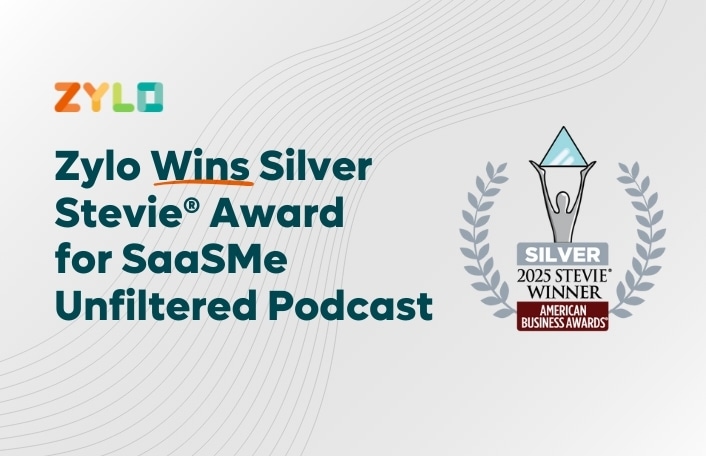
Zylo Is a Two-Time Leader in the 2025 Gartner® Magic Quadrant™ for…
Positioned furthest in vision and highest in execution for the second...
Back
Back
Search for Keywords...
News & Press

09/19/2017
Gartner says: “As software publishers focus on growing SaaS and subscription license revenue, the active metering and cost management of applications become inescapable needs. IT sourcing and vendor management leaders should shift the focus of software asset management practices to eliminating excess expenditures.”
In the SaaS world, software asset management (SAM) is less about being prepared for compliance audits, like in the on-premise world, and more about consumption, spend and license management.
Fundamentally, we’re not managing software “assets” anymore in terms of hardware and equipment. In the cloud, we are managing licenses and subscriptions as Opex versus Capex expenses. This means we don’t have to track licensing infrastructure components and middleware or hardware changes or work with depreciation tables. However, even though moving to the Cloud has advantages, the risk of having too many user licenses and/or inactive user licenses can cause licensing costs to skyrocket.
SAM for SaaS is more complex than traditional SAM in terms of monitoring license consumption and overall cost-management. First, let’s review a few of the key differences between a SaaS application and an on-premise solution and then look at the new SaaS Management challenges for which we need to solve.
Cost
With SaaS, you pay for what you need and don’t have to buy hardware to host anything. Usually SaaS is a more flexible cost model comprised of implementation and services (CapEx) and an ongoing subscription fee (OpEx), resulting in a much lower up front cost. SaaS does not have in-house IT training and maintenance needs that on-premise solutions typically require or hardware and data centers, which can be very costly.
Security
For SaaS applications, the software is hosted by the vendor and that vendor takes on the responsibility of maintaining the software, upgrading it and ultimately keeping the application and its data secure. Most of the worry from IT around security of relying on the SaaS vendor has been calmed and the vendors often have a much higher level of security than most of it’s customers with redundant instances and secure data centers in multiple geographies.
Deployment and Scalability
SaaS applications are fast and easy to set up, with most being done in a matter of days or hours, and need less IT resources than typical on-premise deployments. SaaS applications allow for faster scaling than on-premise solutions. In addition, on-premise solutions release product updates less often and the updates usually require heavy IT support for hardware and software changes; whereas, with SaaS, there are frequent updates with no or very minimal downtime.
SaaS purchasing process
Today, line of business owners are identifying problems to solve, mapping the requirements, evaluating vendors, and ultimately making their own decisions within the organization to purchase new SaaS technology without involving IT or Finance in many cases. There is no longer one master list of who bought what, to solve which problem and here’s how we know if it’s working. The democratization of technology purchasing creates an entirely new challenge around enterprise wide visibility of all technology. SaaS is one of the hardest categories to track in real-time.
SaaS license management
Once SaaS solutions are implemented, it’s difficult to track the effectiveness of each application, especially at scale, when organizations have several hundred applications in use.Some apps are better than others at giving you an easy to use reporting engine to manage license utilization from inside each application admin section. However, it is still cumbersome to pull the data for each individual application when you have hundreds! In addition, many SaaS providers do not proactively alert users when set usage thresholds are exceeded, often resulting in unplanned overage charges.
SaaS renewal process
It is hard enough to figure out what SaaS employees are purchasing and if the software is being fully utilized, let alone track the master renewal calendar to proactively negotiate each contract. Many SaaS contracts will “auto-renew” if no action is taken to signify otherwise during the renewal period. For the most strategic applications, hopefully someone has a handle on those, but for the rest of the SaaS that may not hit the top 10 board, the full investment adds up to millions of dollars for most large enterprises. This is the time to evaluate if there are applications with overlapping functionality or multi-channel spend to partner with the business and make a savings impact.
Technology is accelerating businesses, and the shift to the cloud and SaaS is driving change faster than ever. As a result, technology spend and value are on the agenda in more and more executive meetings. Having one system of record to accurately report SaaS spend, active utilization and overall SaaS management is invaluable to making the best financial decisions for the organization. SaaS is not purchased or used like traditional software and cannot be managed like it.
This article was originally posted on Computerworld.

Positioned furthest in vision and highest in execution for the second...

Zylo’s standout employee engagement leads to national recognition for workplace excellence...

Recognized as “a benchmark for thought leadership in SaaS Management,” Zylo’s...

New product advancements expand Zylo’s leadership as the industry’s most intelligent...
| Cookie | Duration | Description |
|---|---|---|
| cookielawinfo-checkbox-analytics | 11 months | This cookie is set by GDPR Cookie Consent plugin. The cookie is used to store the user consent for the cookies in the category "Analytics". |
| cookielawinfo-checkbox-functional | 11 months | The cookie is set by GDPR cookie consent to record the user consent for the cookies in the category "Functional". |
| cookielawinfo-checkbox-necessary | 11 months | This cookie is set by GDPR Cookie Consent plugin. The cookies is used to store the user consent for the cookies in the category "Necessary". |
| cookielawinfo-checkbox-others | 11 months | This cookie is set by GDPR Cookie Consent plugin. The cookie is used to store the user consent for the cookies in the category "Other. |
| cookielawinfo-checkbox-performance | 11 months | This cookie is set by GDPR Cookie Consent plugin. The cookie is used to store the user consent for the cookies in the category "Performance". |
| viewed_cookie_policy | 11 months | The cookie is set by the GDPR Cookie Consent plugin and is used to store whether or not user has consented to the use of cookies. It does not store any personal data. |
